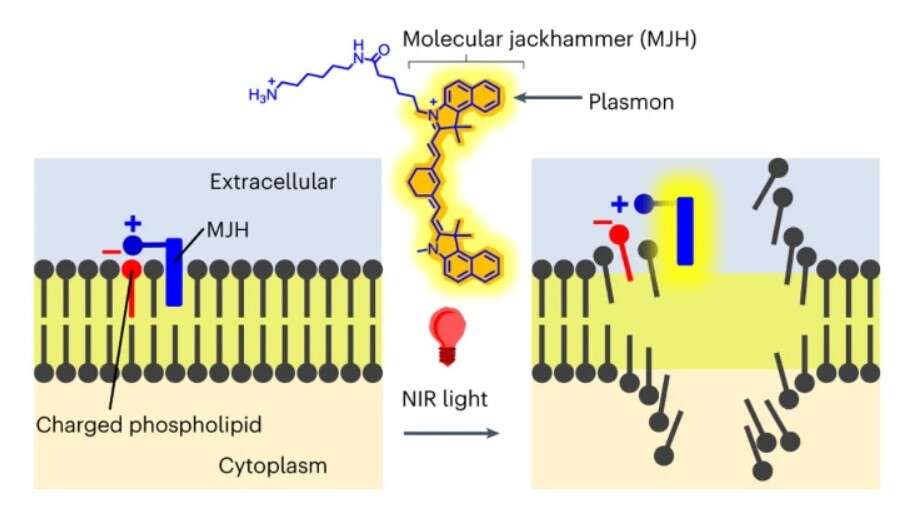Groundbreaking Discovery: Innovative Technique Wipes Out Nearly All Cancer Cells in Lab
A remarkable scientific advancement has emerged from the labs of Rice University, Texas A&M University, and the University of Texas, where scientists have developed a pioneering method to combat cancer. This new technique, which utilizes the power of vibrating molecules activated by a specific type of light, has demonstrated extraordinary efficacy in destroying cancer cells in laboratory settings.
A Leap Forward in Cancer Therapy
In what could be a turning point in the battle against cancer, researchers have introduced an innovative approach to target and destroy cancer cells. The key players in this method are molecules known as aminocyanines, which, when stimulated by near-infrared light, begin to vibrate vigorously. This vibration is potent enough to disrupt and break down the protective membranes of cancer cells.
The Unique Properties of Aminocyanine Molecules
Aminocyanines are not new to science. These molecules are typically employed as dyes in medical imaging due to their stability and ability to attach to cell surfaces. However, their use in directly targeting cancer cells is a novel and exciting development.
Advantages of This New Approach
This method stands out for several reasons:
1. Deep Tissue Reach: The use of near-infrared light allows these molecules to reach and treat tumors located deep within the body, potentially reducing the need for surgical interventions.
Impressive Effectiveness: Laboratory experiments have shown a 99% success rate in killing cancer cells. Additionally, tests on mice with melanoma have been promising, with a significant number of them showing complete remission.
2. Rapid Action: These molecular mechanisms work at an incredibly fast pace, offering a more efficient way to target cancer cells compared to previous methods.
The Science Behind the Technique
The process involves the generation of plasmons within the aminocyanine molecules when they are exposed to near-infrared light. These plasmons are essentially collective vibrations that create a force capable of breaking down the cancer cells’ outer barriers.
Future Implications and Research
This breakthrough is still in its initial stages, but its potential is immense. It introduces a novel strategy for attacking cancer cells by utilizing mechanical forces at a microscopic level. This could pave the way for treatments that are not only more effective but also less invasive.
A Ray of Hope in Cancer Treatment
The findings of this study, published in Nature Chemistry, represent not just a significant scientific achievement but also a new ray of hope for those affected by cancer. As research in this area progresses, we edge closer to a future where cancer can be confronted more effectively, with minimal invasiveness and potentially fewer side effects.
Source: Nature.com
















